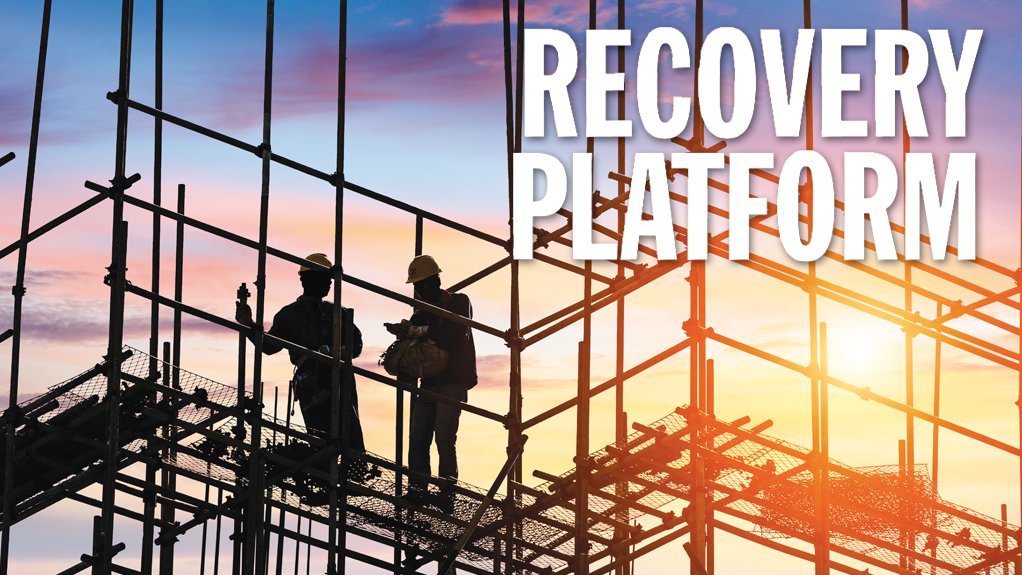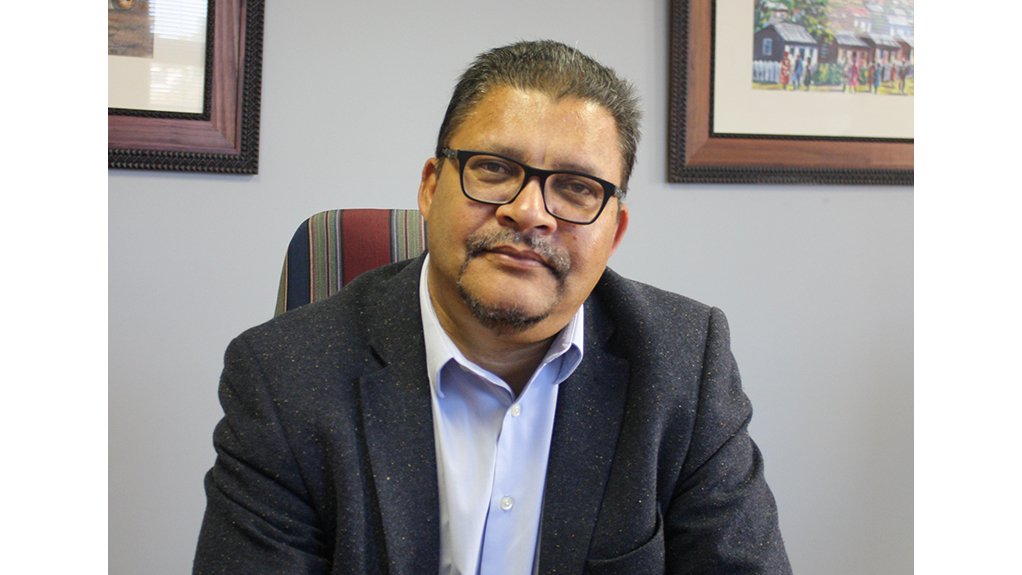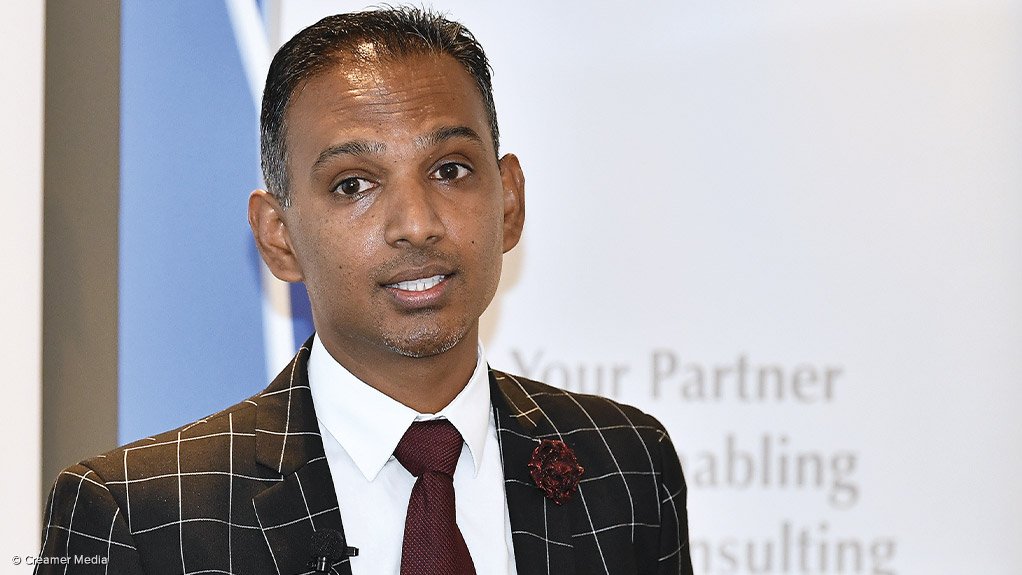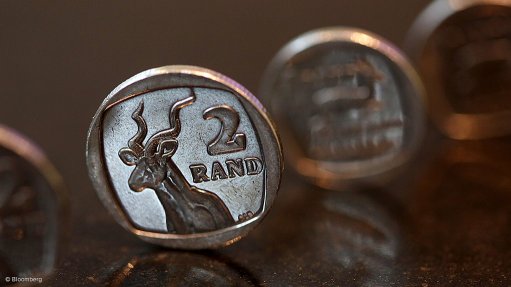Vaccination success key to igniting SA’s infrastructure roll-out






RECONSTRUCTION AND RECOVERY Infrastructure should be consciously engineered to address poverty, inequality and unemployment
Photo by Adobe
CHRIS CAMPBELL Government needs to partner with private-sector investors
SUGEN PILLAY There are going to be delays in implementation
Photo by Creamer Media
PATRICIA DE LILLE All projects will be subject to an independent due-diligence process
Despite the strain that the roll-out of Covid-19 vaccinations is placing on the fiscus, industry body Consulting Engineers South Africa (Cesa) believes that it needs to be prioritised in concert with the fast-tracked implementation of infrastructure projects for the recovery of South Africa’s economy.
Cesa CEO Chris Campbell tells Engineering News & Mining Weekly that the vaccination programme will catalyse the success of the Economic Reconstruction and Recovery Plan (ERRP), which was presented in an address by President Cyril Ramaphosa to a joint sitting of Parliament in October last year.
“Without the success of the vaccination programme, the South African economy might be hindered by rolling lockdowns in a perpetual cycle of infection spikes and declines,” Campbell says, noting that the immunisation of the bulk of the population is critical to increasing the chance of getting projects off the ground.
The ERRP requires that aggressive capital investment be injected into the 50 Strategic Infrastructure Projects (SIPs) and 12 Special Projects gazetted in June 2020. The Special Projects are aimed at creating jobs and developing skills – particularly in network industries, which have significant multiplier effects across the economy.
In addition to these, Ramaphosa has also touted a robust pipeline of 276 “catalytic” projects at an investment value of R2.3-trillion.
The SIPs are at various stages of the project life cycle, having been prioritised for immediate implementation, with all regulatory processes being fast-tracked, thereby allowing for about R340-billion in new investment.
“We need to understand that there are going to be delays in implementation, and that the focus of the State over the coming months is going to be on the vaccine roll-out and ensuring that the immunisation of the population gains traction, spreading as far as possible,” Cesa president Sugen Pillay says.
In his Cesa presidential address in February, Pillay encouraged the industry to be “patient and understanding”, as resources would be diverted towards funding the vaccine initiative. He also noted that the SIPs had the potential to play a significant role in economic recovery, but only “if they can break ground”.
He said that getting a few projects off the ground early would be valuable in giving impetus to the ERRP, while providing reassurance for the public and simultaneously encouraging investment confidence in South Africa.
Complex Logistics
Since the announcement of the vaccination programme, concerns have been raised by private- and public-sector stakeholders regarding not only the potential cost of the vaccination roll-out, but also the immense complexity of the logistics required, and how the implementation of infrastructure projects might consequently be sidelined.
“Our country’s public finances are extremely constrained,” Ramaphosa confirmed during his public address on February 28.
Speaking a few days earlier on February 24, Finance Minister Tito Mboweni said in his Budget Speech that “getting our fiscal house in order is the biggest contribution we can make to support our ERRP”.
He noted that high government debt levels would increase the cost of borrowing across the economy. Such rising debt, he said, would lead to higher future taxation and uncertainty, and servicing this rising debt would further detract from resources that could have rather been invested in infrastructure.
According to the National Treasury’s 2021 Budget Review, public finances have deteriorated over the past decade, mainly because of low growth and tax revenue, as well as the need for increased support for State-owned entities.
“Revenue shortfalls and rising spending pressures threaten government’s ability to invest in new infrastructure,” the document stated.
To mitigate these challenges, the National Development Plan has targeted capital investment of 30% of gross domestic product – 10% from the public sector, and 20% from the private sector – by 2030.
Mboweni noted that government had committed to a R791.2-billion infrastructure investment drive to build, repair and replace ageing infrastructure such as dams, bridges, roads and railway lines. In 2020/21, the public sector spent about R226.1-billion on infrastructure, an increase of 20.6% over the previous year.
However, according to Mboweni, government did not have sufficient financial resources to meet the infrastructure needs. Therefore, collaboration with business, labour and civil society is being sought.
“We are already partnering with the private sector and other players to roll out infrastructure through initiatives such as the blended- finance Infrastructure Fund.
However, all these efforts to expand infrastructure will be wasted if the end-user does not pay a cost-reflective tariff for usage,” he added.
Campbell echoes these sentiments, noting that government’s growing list of debt is so large that it has no choice but to partner with private-sector investors.
Speaking at the Infrastructure South Africa (ISA) project preparation roundtable on November 3, Public Works and Infrastructure Minister Patricia de Lille explained how Cabinet had approved the establishment of ISA to act as the single entry point for all infrastructure projects, and to drive the implementation of the Infrastructure Investment Plan, which was approved by Cabinet in May last year.
A key aspect of ISA is that the administrative arm of the Presidential Infrastructure Coordinating Commission Council, chaired by Ramaphosa, will assist in addressing blockages, unlocking funding and creating a conducive environment for infrastructure investment.
ISA is also adapting the infrastructure procurement framework to allow for public–private partnerships (PPPs) and the unlocking of new funding mechanisms for major infrastructure investment.
“We are clear that government cannot do it alone,” she commented.
However, private-sector investment and PPPs are throttled somewhat by a rational reticence to engage with government, as a result of the public sector’s notoriety for corruption. Campbell points out, however, that the private sector is also complicit.
De Lille also made it clear that corruption was a point of concern.
“On the issue of corruption, to regain the confidence of society and investors, we must show that government is capable of turning the tide, by holding the corrupt and delinquent visibly accountable,” she said, adding that all projects would be subject to an independent due-diligence process.
Cesa, however, believes that government should do more to curb the tide of corruption – in both the public and private sectors.
“Building a more capable State was one of Ramaphosa’s core plans for last year and, while his efforts to fight the ongoing Covid-19 pandemic have been honourable, his efforts to fight corruption are slow and laborious,” Pillay said in his address.
Nonetheless, he tells Engineering News & Mining Weekly that Cesa remains hopeful that, in terms of budget, focus will shift back to infrastructure development once the vaccine roll-out is bedded down.
“We still have much hope invested in the ERRP. We are of the opinion that investment in infrastructure will continue once the vaccine roll-out is going strong, because it is an essential component of poverty alleviation and job creation.”
Pillay adds that it is apparent that some of the projects under the ERRP are slowly unfolding and that Cesa will continue to engage with the Infrastructure Investment Office and ISA to ensure the process is smooth and swift.
Meanwhile, Cesa is adamant that the consulting engineering sector should not only be involved in the planning and roll-out of the myriad infrastructure projects under the ERRP but also contribute to the roll-out of vaccinations, owing to the sector’s extensive wealth of skills and experience in managing highly complex projects and logistics.
“We believe that it is absolutely critical that skilled and experienced engineers are involved in the planning and implementation of these programmes to ensure that they are successful,” Pillay states.
In his presidential address, he said that Cesa was available to contribute wherever necessary and had been doing so through its participation in nonprofit organisations Business Unity South Africa and Business for South Africa.
SIPs Updates
According to the 2021 Budget Review, water and sanitation infrastructure projects are among the most urgent.
To achieve water security, South Africa needs to close an estimated capital funding gap of about R33-billion a year for the next ten years through cost-reflective tariffs. At present, governance structures are weak, cost recovery is low and institutional and regulatory frameworks are inadequate.
Eleven SIPs with an estimated value of R105-billion in this sector have been prioritised. The projects that are ready for investment include the Lesotho Highlands Water Project Phase 2, the uMkhomazi Water Project, the Berg River Voëlvlei Augmentation Scheme and the Mokolo Crocodile River Water Augmentation Project Phase 2.
Energy is another sector requiring urgent development. Three energy projects have been gazetted to date: the Emergency/Risk Mitigation Power Purchase Procurement Programme, which is expected to be operational by the second half of 2022; the Small Independent Power Producer Programme, which is expected to be operational towards the end of 2022; and the Embedded Generation Investment Programme, which is being administered and managed by the Development Bank of Southern Africa and the Green Climate Fund.
These projects, when completed, are expected to add an estimated 2 569 MW of electricity generation capacity to the national grid. The total investment, to be funded by the private sector, amounts to about R52.4-billion.
Meanwhile, 15 projects in the transport sector – to the value of about R47-billion – have been gazetted. Thirteen of these projects – with a combined value of about R19-billion – have been prioritised.
Further, the digital sector infrastructure projects include the Space Infrastructure Hub, the digitalisation of government records and SA Connect Phase 1.
Moreover, a total investment of about R5.3-billion – raised from the public and private sectors – is required for various agriculture and agroprocessing projects.
Human settlements projects include six Integrated Residential Development Programmes, ten social housing projects and two large-scale privately led developments. The 18 SIPs projects gazetted for this sector have a total investment value of R129-billion and aim to provide housing for more than 170 000 people.
With these developments in mind, Pillay’s presidential address reminded the industry that rebuilding needed to not only be effectively and efficiently implemented, but “mindful” as well, so that it is not simply about providing infrastructure, but that it is “consciously engineered to address poverty, inequality and unemployment”.
Moreover, he said that consulting engineers should “go beyond the call of duty to save lives and strengthen the social compact” between State and society.
Article Enquiry
Email Article
Save Article
Feedback
To advertise email advertising@creamermedia.co.za or click here
Comments
Press Office
Announcements
What's On
Subscribe to improve your user experience...
Option 1 (equivalent of R125 a month):
Receive a weekly copy of Creamer Media's Engineering News & Mining Weekly magazine
(print copy for those in South Africa and e-magazine for those outside of South Africa)
Receive daily email newsletters
Access to full search results
Access archive of magazine back copies
Access to Projects in Progress
Access to ONE Research Report of your choice in PDF format
Option 2 (equivalent of R375 a month):
All benefits from Option 1
PLUS
Access to Creamer Media's Research Channel Africa for ALL Research Reports, in PDF format, on various industrial and mining sectors
including Electricity; Water; Energy Transition; Hydrogen; Roads, Rail and Ports; Coal; Gold; Platinum; Battery Metals; etc.
Already a subscriber?
Forgotten your password?
Receive weekly copy of Creamer Media's Engineering News & Mining Weekly magazine (print copy for those in South Africa and e-magazine for those outside of South Africa)
➕
Recieve daily email newsletters
➕
Access to full search results
➕
Access archive of magazine back copies
➕
Access to Projects in Progress
➕
Access to ONE Research Report of your choice in PDF format
RESEARCH CHANNEL AFRICA
R4500 (equivalent of R375 a month)
SUBSCRIBEAll benefits from Option 1
➕
Access to Creamer Media's Research Channel Africa for ALL Research Reports on various industrial and mining sectors, in PDF format, including on:
Electricity
➕
Water
➕
Energy Transition
➕
Hydrogen
➕
Roads, Rail and Ports
➕
Coal
➕
Gold
➕
Platinum
➕
Battery Metals
➕
etc.
Receive all benefits from Option 1 or Option 2 delivered to numerous people at your company
➕
Multiple User names and Passwords for simultaneous log-ins
➕
Intranet integration access to all in your organisation























